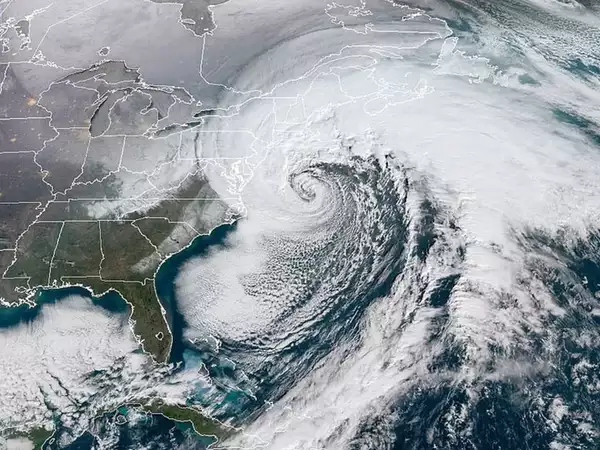
By Jessica Murdock
Hurricane-force Winds and Heavy Snow Hit the Region
A devastating “bomb cyclone” storm swept through the northwest United States on Tuesday, unleashing hurricane-force winds, heavy rainfall, and significant snowfall. The storm, one of the strongest atmospheric rivers of the season, battered regions from California to the Pacific Northwest, causing widespread damage. Power outages affected hundreds of thousands, and fallen trees claimed at least two lives.
Deadly Consequences as Trees Fall on Homes
In Washington state, the storm proved fatal, with falling trees killing two people. A woman was killed when a large tree crashed into a homeless encampment in Lynnwood, Washington, on Tuesday night. Another fatality occurred in Bellevue, east of Seattle, when a tree fell onto a home, killing a woman. Fire officials have urged residents to stay indoors as trees continued to topple across the region.
Massive Power Outages and Disruptions
As of Wednesday morning, more than 600,000 power outages were reported in Washington, with outages also affecting Oregon, California, and Nevada. The storm’s powerful winds—gusting up to 75 mph (120 kph)—brought down trees, power lines, and other debris, making travel hazardous. In Bellevue, local authorities urged people to stay on the lowest floor of their homes and avoid going outside.

Severe Flooding and Snow in California
The storm system triggered flash flood warnings for parts of California, including areas north of San Francisco. Forecasters predicted up to 10 inches (25 cm) of rain in the region. Higher elevations, including the Sonoma County wine region, received over 1 ½ inches (3.8 cm) of rain in just 24 hours. Flash flooding, rockslides, and debris flows were expected as the storm continued its course. In northern California’s Sierra Nevada, up to 15 inches (38 cm) of snow was forecast above 3,500 feet (1,066 meters), with wind gusts of up to 75 mph (120 kph) expected to exacerbate the conditions.
Travel Disruptions and Road Closures
The storm also caused major travel disruptions, particularly in Oregon and California. In southern Oregon, an 11-mile (18-kilometer) stretch of Interstate 5 was closed due to severe winter weather in northern California. The Oregon Department of Transportation warned of long-term closures. Additionally, ferry services between Port Townsend and Coupeville in northwestern Washington were halted due to rough seas and high winds.
Blizzard Conditions and Dangerous Roadways in the Midwest
The storm’s impact stretched beyond the Pacific Northwest. In the Midwest, heavy snowfall and icy conditions created hazardous driving situations, particularly in the Dakotas and Minnesota. The Weather Service issued snow warnings, forecasting up to 16 inches (40 cm) of snow in some areas of North Dakota. Slippery roads caused several accidents, including jackknifed tractor-trailers in northern Minnesota, though no serious injuries were reported.
Winter Storm Warnings and Continued Risks
As the storm continued to move across the region, officials warned of continued dangers, including the risk of falling trees, flooded roadways, and hazardous travel conditions. In addition to winter storm warnings, a flood watch was issued for parts of southwestern Oregon, with more heavy rain expected. Travel in mountain areas was especially dangerous, with snow accumulation rates of 2 to 3 inches (5 to 7.6 cm) per hour and wind gusts up to 65 mph (105 kph).
Communities Struggling to Cope with Damage
Residents in affected areas reported widespread damage, including blocked driveways and fallen branches. In Issaquah, Washington, Robert Haynes described the situation as a “snow day” without snow, as trees and debris filled the streets, forcing families to remain at home. For many, the storm’s impact felt like a series of natural disasters combining into one relentless event.
Weather Alerts and Safety Warnings
With the storm continuing its path through the northwest and into the Midwest, the Weather Service urged residents to take precautionary measures, including staying away from trees and being cautious while driving in windy or snowy conditions. Emergency responders are working to clear roads and restore power, but authorities warned that the full impact of the storm would continue to be felt for days.


